|
Books Should Be Free Loyal Books Free Public Domain Audiobooks & eBook Downloads |
|
|
Books Should Be Free Loyal Books Free Public Domain Audiobooks & eBook Downloads |
|
Fiction |
|---|
|
Book type:
Sort by:
View by:
|
By: Jacob Abbott (1803-1879) | |
|---|---|
 Stuyvesant A Franconia Story
Stuyvesant A Franconia Story
| |
By: Hans Christian Andersen (1805-1875) | |
|---|---|
 Andersen's Fairy Tales
Andersen's Fairy Tales
The Little Mermaid, The Ugly Duckling, The Snow Queen, The Real Princess and a host of other wonderful tales which form so much a part of childhood are part of Andersen's Fairy Tales, by Hans Christian Andersen. This volume contains eighteen selected stories. Some of them are old familiar friends, while others maybe new to some readers, but all of them equally enchanting and enthralling. Today, these stories are known almost everywhere in the world and have been translated into hundreds of languages... | |
By: F. Scott Fitzgerald (1896-1940) | |
|---|---|
 This Side of Paradise
This Side of Paradise
A romantic and witty novel that has weathered time to remain one of America’s classic pieces. In the shadows of the great Gatsby is another brilliant novel by F. Scott Fitzgerald. This book is evidence to Fitzgerald’s literal genius because it was written by the author in his twenties to mirror his experiences at the time. It paints a picture of what it was like to be a young man or woman in the 20th century and in the wake of the First World War. The book is set on a foundation of socialist principles... | |
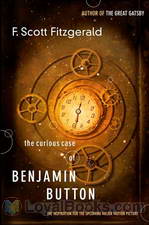 The Curious Case of Benjamin Button
The Curious Case of Benjamin Button
A life lived backwards, with events happening in reverse order forms the strange and unexpected framework of one of F Scott Fitzgerald's rare short stories. The Curious Case of Benjamin Button was published in Collier's in 1927 and the idea came to Fitzgerald apparently from a quote of Mark Twain's in which he regretted that the best part of life came at the beginning and the worst at the end. Fitzgerald's concept of using this notion and turning the normal sequence of life on its head resulted in this delightful, thought provoking fantasy tale... | |
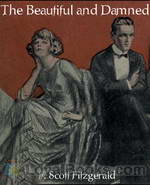 The Beautiful and Damned
The Beautiful and Damned
An idle, extravagant young man is the heir presumptive of his wealthy grandfather, an industrial tycoon. His wife, divinely beautiful and utterly selfish, believes that nothing is more powerful than her own beauty. Together, this couple represents what Fitzgerald famously portrayed as the lost generation of the Jazz Age in several of his novels. In The Beautiful and The Damned, F Scott Fitzgerald explores the trivial and shallow lives of the well-heeled inheritors of the American Dream the second or third generation that can afford to live on the fortunes that their forbears worked so hard to accumulate... | |
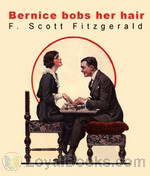 Bernice Bobs Her Hair
Bernice Bobs Her Hair
Pretty but socially clueless Bernice lets her know-it-all cousin push her around, but eventually, something's gotta give! (Introduction by BellonaTimes) | |
By: Baroness Emmuska Orczy (1865-1947) | |
|---|---|
 El Dorado
El Dorado
If you've read and loved the exciting classic The Scarlet Pimpernel then you'd probably be delighted to follow the further adventures of the dashing Sir Percy Blakeney. El Dorado by Baronness “Emmuska” Orczy depicts the intrepid swordsman and escape artist in the role of savior of the French royal family. Published in 1913, El Dorado was the fourth in the Pimpernel series of eleven books, numerous short stories and other related writings about her famous British adventurer. However, Orczy did not always follow a strict chronological sequence while publishing the novels and hence, there is plenty of overlap between the time frames of the stories... | |
 The Elusive Pimpernel
The Elusive Pimpernel
First Published in 1908, The Elusive Pimpernel by Baroness Orczy is the 4th book in the classic adventure series about the Scarlet Pimpernel. | |
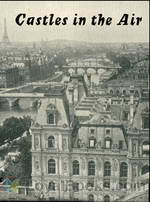 Castles in the Air
Castles in the Air
Baroness Emma Orczy (full name: Emma (”Emmuska”) Magdolna Rozália Mária Jozefa Borbála Orczy de Orczi) (September 23, 1865 – November 12, 1947) was a British novelist, playwright and artist of Hungarian noble origin. She was most notable for her series of novels featuring the Scarlet Pimpernel. Castles in the Air, a short novel or perhaps more like a collection of short stories with memories of a French rogue in the early 19th century Paris, was published in 1921 and about it I quote from the foreword: In very truth my good friend Ratichon is an unblushing liar, thief, a forger–anything you will; his vanity is past belief, his scruples are non-existent... | |
By: Henry David Thoreau (1817-1862) | |
|---|---|
 Walking
Walking
This was originally a lecture given by Thoreau in 1851 at the Concord lyceum titled “The Wild” . He revised it before his death and it was included as part of the June 1862 edition of Atlantic Monthly. This essay appears, on the surface, to be simply expounding the qualities of Nature and man’s place therein. Through this medium he not only touches those subjects, but with the implications of such a respect for nature, or lack thereof. | |
By: Anna Sewell | |
|---|---|
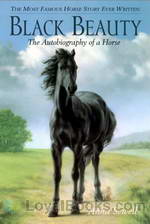 Black Beauty
Black Beauty
This unique tale is narrated by a lovely, gentle horse named Black Beauty and has remained a children's classic since it was first published in 1877. It earned eternal name and fame for its author Anna Sewell, an invalid who died within a few months of publication. According to current estimates, it has sold more than fifty million copies world wide, been translated into many languages and delighted generations of children. The original title page reads: Black Beauty: Translated from the original Equine by Anna Sewell and this gives the reader an instant glimpse into what the book will be about... | |
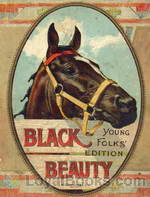 BLACK BEAUTY - Young Folks Edition
BLACK BEAUTY - Young Folks Edition
The same beloved story of the adventures and misadventures and of a young horse that we all know and love, but rewritten by the author for young people with much shorter chapters. All of the pathos, tenderness and fun are still there, just written for a younger audience. While forthrightly teaching animal welfare, it also teaches how to treat people with kindness, sympathy, and respect. | |
By: Mary Wollstonecraft Shelley | |
|---|---|
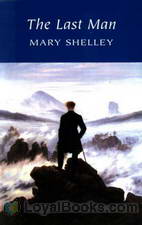 The Last Man
The Last Man
The Last Man is an early post-apocalyptic science fiction novel by Mary Shelley, which was first published in 1826. The book tells of a future world that has been ravaged by a plague. The plague gradually kills off all people. Lionel Verney, central character, son of a nobleman who gambled himself into poverty, finds himself immune after being attacked by an infected “negro,” and copes with a civilization that is gradually dying out around him. | |
 Mathilda
Mathilda
The finished draft of a short novel by Mary Shelley. Its adult theme, concerning a father’s incestuous love for his daughter and its consequences, meant that the manuscript was suppressed by Shelley’s own father, and not published until 1959, more than a hundred years after her death. Summary by Cori Samuel | |
By: Henry James (1843-1916) | |
|---|---|
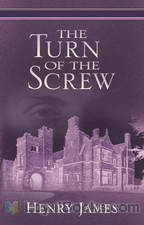 The Turn of the Screw
The Turn of the Screw
Christmas Eve. Guests round a fireside begin telling each other ghost stories. One of them relates a true incident involving the governess of his little nephew and niece. Strange events begin to take place, involving the housekeeper, a stranger who prowls round the grounds, a mysterious woman dressed in black and an unknown misdemeanor committed by the little nephew. The Turn of the Screw by Henry James was published in 1893 and it remains one of the best-known and admired works of this great American writer... | |
 The Portrait of a Lady
The Portrait of a Lady
Regarded as one of James’ finest works, The Portrait of a Lady revolves around the life and the development of Isabel Archer as she embarks on a scrupulous journey of self-discovery, forced to choose between her individual freedom and the preset conventions of society. Moreover, the novel explores themes of existentialism, objectification of women, wealth, suffering, and the conflict between individual longing and social conformity. Set in the second half of the 19th century, the novel opens with the introduction of Isabel Archer, a naive young woman from Albany, New York... | |
 Washington Square
Washington Square
First appearing as a serial in Cornhill Magazine in 1880, Washington Square focuses on the strained relationship between father and daughter, which is instigated as a result of opposing personalities, viewpoints, and lack of affection. At the same time, James presents an insidious father, who would rather sacrifice his daughter’s happiness and condemn her to a lifetime of misery, simply to prove the accuracy of his prediction. Essentially a tragicomedy, the novel focuses on themes including family, deception, cruelty, manipulation, and opposed principles... | |
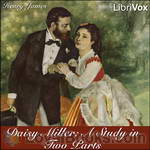 Daisy Miller: A Study in Two Parts
Daisy Miller: A Study in Two Parts
Daisy Miller is an 1878 novella by Henry James. It portrays the confused courtship of the eponymous American girl by Winterbourne, a compatriot of hers with much more sophistication. His pursuit of her is hampered by her own flirtatiousness, which is frowned upon by the other expatriates they meet in Switzerland and Italy. Her lack of understanding of the social mores of the society she so desperately wishes to enter ultimately leads to tragedy. | |
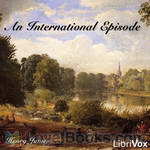 An International Episode
An International Episode
Two men visting the US from London meet a pair of charming women who return the visit the following year in London. Romantic intrigues, miscommunication and cultural faux pas abound in this short but delightful novel. | |
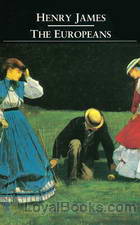 The Europeans
The Europeans
The Europeans: A sketch is a short novel by Henry James, published in 1878. It is essentially a comedy contrasting the behaviour and attitudes of two visitors from Europe with those of their relatives living in the ‘new’ world of New England. The novel first appeared as a serial in The Atlantic Monthly for July-October, 1878. James made numerous minor revisions for the first book publication. | |
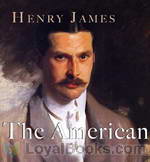 The American
The American
One of James’s early novels, The American plunges right in to one of the writer’s most enduring subjects, that of the innocent, or at least inexperienced, American abroad, seeking to come to terms with the social customs and conventions of an old European aristocracy (think of Daisy Miller, Portrait of a Lady, The Wings of the Dove and others). The aptly named Christopher Newman, having made a small fortune from business in California, has come to the Old World for the first time, determined to enlarge his experience by learning all he can of it... | |
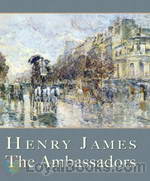 The Ambassadors
The Ambassadors
Henry James considered The Ambassadors his best, or perhaps his best-wrought, novel. It plays on the great Jamesian theme of Americans abroad, who finds themselves in an older, and some would say richer and more sophisticated, culture that that of the United States. The protagonist is Lambert Strether, a man in his fifties, editor of a small literary magazine in the manufacturing town of Woollett, Massachusetts, who arrives in Europe on a mission undertaken at the urging of his patron, Mrs. Newsome, to bring home her son Chadwick... | |
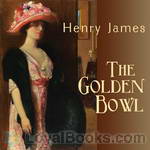 The Golden Bowl
The Golden Bowl
The Golden Bowl is a 1904 novel by Henry James. Set in England, this complex, intense study of marriage and adultery completes what some critics have called the “major phase” of James’ career. The Golden Bowl explores the tangle of interrelationships between a father and daughter and their respective spouses. The novel focuses deeply and almost exclusively on the consciousness of the central characters, with sometimes obsessive detail but also with powerful insight. | |
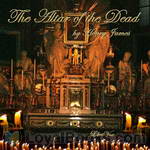 The Altar of the Dead
The Altar of the Dead
A fable of literally life and death significance, the story explores how the protagonist tries to keep the remembrance of his dead friends, to save them from being forgotten entirely in the rush of everyday events. He meets a woman who shares his ideals, only to find that the past places what seems to be an impassable barrier between them. Although James was not religious in any conventional sense, the story shows a deep spirituality in its treatment of mortality and the transcendent power of unselfish love. | |
 The Wings of the Dove
The Wings of the Dove
The Wings of the Dove, published in 1902, represents to my memory a very old–if I shouldn’t perhaps rather say a very young–motive; I can scarce remember the time when the situation on which this long-drawn fiction mainly rests was not vividly present to me. The idea, reduced to its essence, is that of a young person conscious of a great capacity for life, but early stricken and doomed, condemned to die under short respite, while also enamoured of the world; aware moreover of the condemnation and passionately desiring to “put in” before extinction as many of the finer vibrations as possible, and so achieve, however briefly and brokenly, the sense of having lived. | |
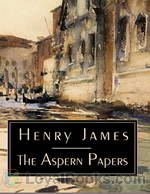 The Aspern Papers
The Aspern Papers
One of James’s favorite short novels, the Aspern Papers tells of the efforts of the nameless narrator to procure the papers of a famous, but now dead, American poet. His attempts to secure them from the poet’s former lover and her niece, now recluses in Venice, are stymied both by them, and by his own mistakes in his quest. | |
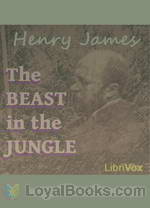 The Beast in the Jungle
The Beast in the Jungle
'The Beast in the Jungle' is a 1903 novella by Henry James, first published as part of the collection, The Better Sort. Almost universally considered one of James' finest short narratives, this story treats appropriately universal themes: loneliness, fate, love and death. The parable of John Marcher and his peculiar destiny has spoken to many readers who have speculated on the worth and meaning of human life. | |
 The Jolly Corner
The Jolly Corner
“The Jolly Corner,” published in 1908, is considered by many to be a ghost story ranking second only to “The Turn of the Screw.” James’s protagonist, Spencer Brydon, is an American of 56, returned to New York after 33 years in Europe, where he has apparently accomplished little while living off his New York rentals. His friendship with Alice Staverton, and his engagement in the development of a property awaken him to the possibilities that might have been his, had he chosen a different course of life... | |
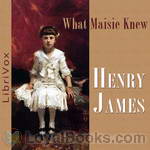 What Maisie Knew
What Maisie Knew
When Beale and Ida Farange are divorced, the court decrees that their only child, the very young Maisie, will shuttle back and forth between them, spending six months of the year with each. The parents are immoral and frivolous, and they use Maisie to intensify their hatred of each other. | |
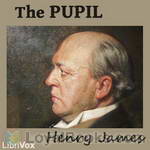 The Pupil
The Pupil
Pemberton, a young American with an Oxford education and out of money, takes a job tutoring Morgan Moreen, the 12-year old son of an American couple living in Europe in a style not quite matched by their income. Morgan, who is highly intelligent, is also precocious and perceptive enough to understand his parents' pretentious aimlessness. Nor, as it happens, do his parents pay Pemberton the salary to which they'd agreed -- shouldn't he be satisfied, after all, by his life with them, and by the joy of tutoring young Morgan? Alternately charmed and put off by the Moreen family, Pemberton is left to choose between his attachment to his young pupil and his need to get on in life. | |
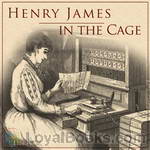 In the Cage
In the Cage
In the Cage is a novella by Henry James, first published as a book in 1898. This long story centers on an unnamed London telegraphist. She deciphers clues to her clients' personal lives from the often cryptic telegrams they submit to her as she sits in the "cage" at the post office. Sensitive and intelligent, the telegraphist eventually finds out more than she may want to know. | |
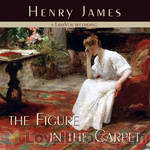 The Figure in the Carpet
The Figure in the Carpet
The story ostensibly concerns a young literary critic who greatly admires the writer Hugh Vereker. A meeting with Vereker, however, shows him that he — and all other critics — have in fact missed the great point of Vereker’s work, and the critic (and his editor) thereupon devote themselves to trying to unravel the mystery. James’s story, however, almost certainly has an autobiographical side to it, perhaps itself criticizing those critics who couldn’t see, or wouldn’t see, the figures lost in the carpet of his own writing. | |
 The Real Thing
The Real Thing
The Real Thing is, on one level, a somewhat ironic tale of an artist and two rather particular models. Yet it also raises questions about the relationship between the notion of reality in our humdrum world, and the means that an artist must use in trying to achieve, or reflect, that reality. Though the protagonist is an artist and illustrator of books, not a writer, it's not hard to imagine that James has himself, and other writers, in mind. | |
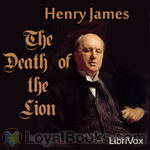 The Death of the Lion
The Death of the Lion
This short novel is a black comedy about fame, manipulation, pretension, and surviving it all. The narrator, a reprehensible and seedy journalist, sets out to interview a minor author, and in his own quest for glory, turns the author into the celebrity of the day. The sudden and untimely death of the author, with his latest work unfinished, presents a troubling dilemma for the narrator, which he resolves with no more conscience than he had when he began his quest. (Introduction by Christine Dufour) | |
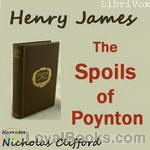 The Spoils of Poynton
The Spoils of Poynton
The recently widowed Adela Gereth, a lover of beauty and passionate collector of fine objects, strikes up a friendship with the young Fleda Vetch, when both of them find themselves guests in the tasteless house of the Brigstock family. Mrs. Gereth fears that her son Owen, an honorable but somewhat unimaginative young man, may take up with one of the Brigstock girls, and indeed he presently announces his engagement to Mona, the eldest daughter. That means that Mrs. Gereth will have to leave Poynton, the beautiful house that she and her husband filled with the furniture, china, tapestries, and other objects that they lovingly collected over the years... | |
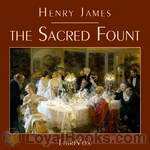 The Sacred Fount
The Sacred Fount
Published in 1901, The Sacred Fount delves into the interior observations and obsessions of one Englishman during a weekend gathering in the country. Regarding himself as a master of human psychology, the narrator watches the goings-on of the other guests and weaves theories about the interpersonal implications of what he witnesses, leaving the not infrequently perplexed reader the task of sorting out whether his conclusions are facts or fancies. (Introduction by S. Kovalchik) | |
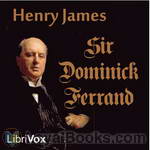 Sir Dominick Ferrand
Sir Dominick Ferrand
“Levity” is not a word often applied to Henry James, but this story has about it an attractively lighthearted quality. It tells of Peter Baron, a poor, young struggling writer of adequate, if not transcendent, talent, who lives in a dreary London boarding house inhabited also by a mysteriously clairvoyant and beautiful young widow, with her small boy. When Baron buys himself a second-hand writing desk to stimulate the creative juices, he finds carefully hidden within it a cache of letters that appear to compromise a recently deceased statesman... | |
 The Bostonians (Vol. 1 & 2)
The Bostonians (Vol. 1 & 2)
This bittersweet tragicomedy centers on an odd triangle of characters: Basil Ransom, a political conservative from Mississippi; Olive Chancellor, Ransom's cousin and a Boston feminist; and Verena Tarrant, a pretty, young protégée of Olive's in the feminist movement. The storyline concerns the struggle between Ransom and Olive for Verena's allegiance and affection, though the novel also includes a wide panorama of political activists, newspaper people, and quirky eccentrics. | |
 The Coxon Fund
The Coxon Fund
This novella explores the relationship between Frank Saltram, a charismatic speaker who is also a freeloader; Ruth Anvoy, a young American who visits her widowed aunt, Lady Coxon, an American who married a Brit; and George Gravener, a British intellectual with a future in politics who becomes engaged to Ms. Anvoy. The story revolves around the dispersal of The Coxon Fund, a sum of money left by Ms. Anvoy’s father with the stipulation that is be given to a great man to publish and pursue moral truth. | |
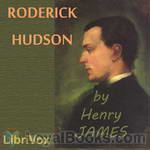 Roderick Hudson
Roderick Hudson
Published as a serial in 1875, Roderick Hudson is James's first important novel. The theme of Americans in Europe, so important in much of James's work, is already central to the story. Hudson is a young law student in Northampton, Massachusetts, who shows such surprising ability as a sculptor that the rich Rowland Mallett, visiting a cousin in Northampton, decides to stake him to several years of study in Rome, then a center of expatriate American society. The story has to do not only with Roderick's growth as an artist and the problems it brings, but also as a man susceptible to his new environment, and indeed his occasional rivalries with his American friend and patron... | |
 Some Short Stories [by Henry James]
Some Short Stories [by Henry James]
| |
 The Tragic Muse
The Tragic Muse
| |
 The Bostonians, Vol. II (of II)
The Bostonians, Vol. II (of II)
| |
 The Lesson of the Master
The Lesson of the Master
| |
By: Henry james (1843-1916) | |
|---|---|
 Awkward Age
Awkward Age
Nanda Brookenham is coming of age, and thus 'coming out' in London society - which leads to complications in her family's social set in London's fin de siècle life. James presents the novel almost entirely in dialogue, an experiment that adds to the immediacy of the scenes but also creates serious ambiguities about characters and their motives. | |
By: Henry james (1843-1916) | |
|---|---|
 Chaperon
Chaperon
What on earth is a girl to do when London society has convicted her mother of a dreadful sin and has ostracized her? If blood is thicker than water, and the daughter remains loyal to her erring parent, how far will affect her own standing in society (and most important, of course) in the marriage market that is controlled by that society? This is the problem facing Rose Tramore and it will take all her charm -- and perseverance -- to solve it. (Nicholas Clifford) | |
By: Henry James (1843-1916) | |
|---|---|
 The Pension Beaurepas
The Pension Beaurepas
| |
 The Beldonald Holbein
The Beldonald Holbein
| |